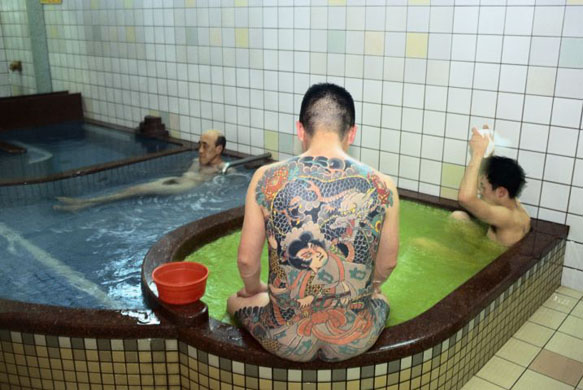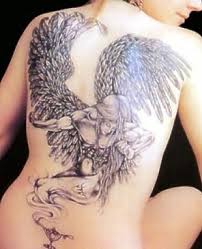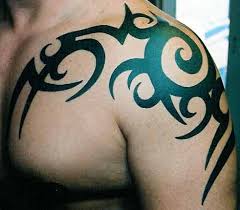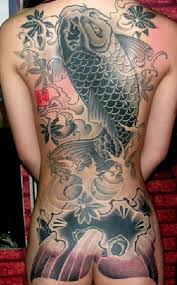 Japanese tattoo art has a lot of names - irezumi and horimono in the Japanese language. Irezumi is the word meant for the basic visible ink covering huge parts of the body like the back. Japanese tattoo art has a extremely extensive tradition.
Japanese tattoo art has a lot of names - irezumi and horimono in the Japanese language. Irezumi is the word meant for the basic visible ink covering huge parts of the body like the back. Japanese tattoo art has a extremely extensive tradition.Since the influence of Confucianism and Buddhism over the Japanese culture, tattoo art has a damaging connotation for the majority of the Japanese individuals. In the eyes of an ordinary Japanese a ink is considered a mark of a yakuza - a member of the Japanese mafia - and a macho emblem of members of the lesser classes.
The Early History of Japanese Tattoo Art
Archaeologists believe that the initial settlers of Japan, the Ainu citizens, used facial tattoos. Chinese papers tell concerning the Wa inhabitants - the Chinese name meant for their Japanese neighbours - and the individuals lifestyle of diving into water for fish and shells and decorating the total skin with tattoos. These reports are in the region of 1700 years old.
For the superior developed Chinese culture, tattooing was a barbaric undertaking. As soon as Buddhism was brought from China to Japan and with it the solid influence of the Chinese culture, tattooing got destructive connotations. Criminals were marked with tattoos to punish and identify them within society.
Tattoos in the Edo Period
In the Edo period - 1603-1868 - Japanese tattoo drawings became a part of ukiyo-e - the suspended world culture. Prostitutes - yujos - of the pleasure quarters used tattoos to improve the individuals appeal for customers. Skin tattoos were furthermore used by labourers and firemen.
From 1720 on, the tattooing of criminals became an formal punishment and replaced taking away of the nose and the ears. The criminal received a ring ink around the arm in support of every offence or else a character ink on his temple. Tattooing criminals was continued until 1870, at what time it was abolished by the new Meiji government of the Japanese Emperor.
This visible punishment produced a further genre of outcasts which had no place taking part in society and nowhere to go. A lot of these outlaws were ronin - master less samurai warriors. They had no alternatives than organizing gangs. These men created the start of the yakuza - the controlled criminals inside Japan inside the twentieth century.
Japanese Tattoo Prints
In 1827 the ukiyo-e artist Kuniyoshi Utagawa published the original 6 emblems of the 108 Heroes of the Suikoden. The Suikoden were something like ancient Robin Hoods - honourable bandits. The story is based on a classic Chinese novel - Shui-Hi-Chuan, which dates from the 13th and 14th century. The novel was initially translated into Japanese in 1757 by Okajima Kanzanion. By the turn of the 18th to the 19th century the story was available with illustrations by Katsushika Hokusai. The novel of the 108 honourable bandits was extremely accepted in the sphere of Japan and created a kind of Suikoden trend amongst Japanese towns inhabitants.

















No comments:
Post a Comment